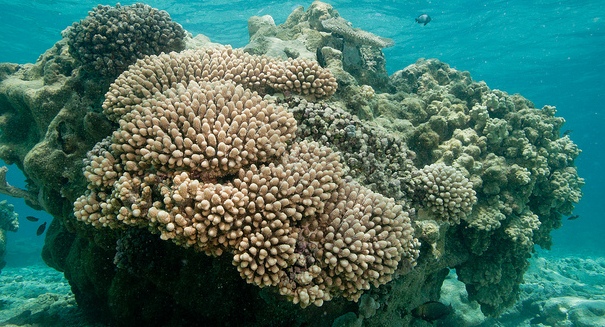
Coral bleaching in Hawaii could potentially kill off large amounts of reef-building species vital to the area's marine ecosystem.
A lack of trade winds this year has left Hawaii even hotter and muggier than it usually is in late summer. While those on land are waiting for a winter reprieve, ocean species are also suffering from the higher than normal temperatures.
A reef survey of coral off the coast of Oahu is showing a higher rate of coral bleaching than Hawaii has seen in decades due to rising ocean temperatures. The Hawaii Division of Aquatic Resources conducted the dives after a federal warning of large possible declines in the region’s coral over the next century and local reports of widespread bleaching in the archipelago.
As ocean temperatures rise, distressed coral releases algae that are necessary to its survival, also causing the coral to lose its color.
This year underwater temperatures are reaching 86 degrees Fahrenheit, typically the maximum is about 83 and the normal range is from 72 to 78.
The survey showed that 75 percent of reef-building coral displayed signs of bleaching, said Frazer McGilvray, administrator of the Division of Aquatic Resources. Bleaching rates like this have not been seen since 1996, and McGilvray says this event is even more severe.
Coral is an integral part of the marine ecosystem in the region, providing habitat and shelter for countless aquatic species that help support the local economy through tourism. “People come to Hawaii to see corals, they come to Hawaii to use our oceans,” said McGilvray. “If our corals die, it could potentially take a long, long time for them to recover.”
As water temperatures cool, it is possible for the corals to regain their color; but no estimates of how much coral will die during this bleaching event have yet been made, and it is unclear how much has died off already.
“It’s pretty alarming,” McGilvray said. “That’s a high, high percentage of corals to be bleaching.”
Leave a Reply